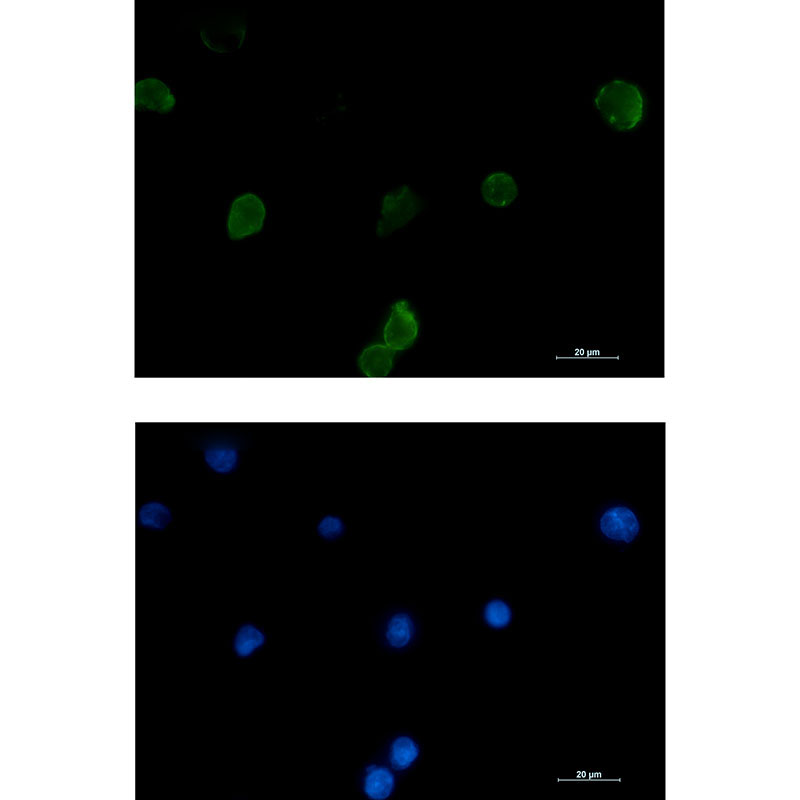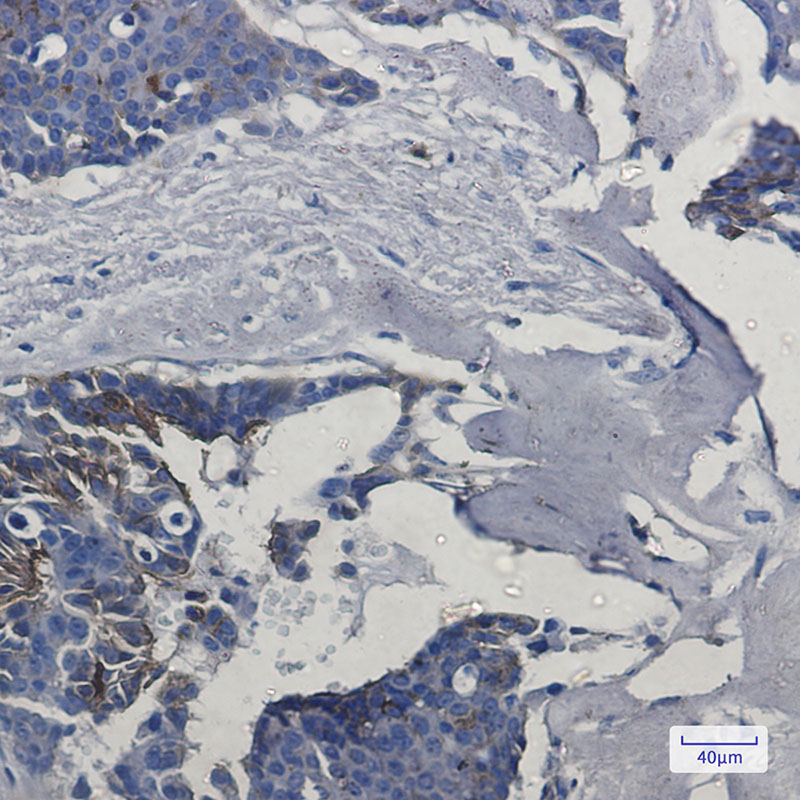


| WB | 1/500-1/1000 | Human,Mouse,Rat |
| IF | 1/20 | Human,Mouse,Rat |
| IHC | 1/50-1/100 | Human,Mouse,Rat |
| ICC | 1/50-1/200 | Human,Mouse,Rat |
| FCM | 咨询技术 | Human,Mouse,Rat |
| Elisa | 咨询技术 | Human,Mouse,Rat |
| Aliases | 9-27; CD225; IFI17; LEU13; DSPA2a |
| Entrez GeneID | 8519 |
| WB Predicted band size | Calculated MW: 14 kDa; Observed MW: 14 kDa |
| Host/Isotype | Rabbit IgG |
| Antibody Type | Primary antibody |
| Storage | Store at 4°C short term. Aliquot and store at -20°C long term. Avoid freeze/thaw cycles. |
| Species Reactivity | Human |
| Immunogen | A synthetic peptide of human IFITM1 |
| Formulation | Purified antibody in TBS with 0.05% sodium azide,0.05%BSA and 50% glycerol. |
+ +
以下是关于IFITM1抗体的3篇参考文献,按文献名称、作者和摘要内容简要列举:
---
1. **文献名称**:*IFITM1 inhibits HIV-1 infection by targeting virus membrane for lysosomal degradation*
**作者**:Wang Y. et al.
**摘要**:本研究利用IFITM1特异性抗体,通过免疫荧光和免疫印迹技术,揭示了IFITM1通过引导HIV-1病毒颗粒至溶酶体降解途径抑制感染的机制,强调了其在天然抗病毒防御中的作用。
---
2. **文献名称**:*Overexpression of IFITM1 correlates with poor prognosis in gastric cancer*
**作者**:Li X. et al.
**摘要**:通过免疫组化分析结合IFITM1抗体,研究发现IFITM1在胃癌组织中显著高表达,且与患者生存率降低相关,提示其可能作为潜在的肿瘤预后标志物。
---
3. **文献名称**:*IFITM1 restricts influenza A virus entry by blocking fusion with cellular membranes*
**作者**:Brass A.L. et al.
**摘要**:该研究利用IFITM1抗体进行流式细胞术和共聚焦显微镜观察,证实IFITM1通过阻止流感病毒与宿主细胞膜融合,抑制病毒进入,揭示了其广谱抗病毒功能的分子基础。
---
以上文献均通过IFITM1抗体技术阐明了该蛋白在疾病机制中的关键作用,涵盖病毒感染与癌症领域。如需更多文献或扩展信息,可进一步检索PubMed或Web of Science数据库。
Interferon-induced transmembrane protein 1 (IFITM1) is a member of the IFITM family, which plays a critical role in innate immunity by restricting viral infections, particularly against enveloped viruses such as influenza, dengue, and SARS-CoV-2. IFITM1 is a type III transmembrane protein encoded by an interferon-stimulated gene, upregulated in response to viral pathogens or inflammatory cytokines. It inhibits viral entry by altering membrane fluidity or sequestering cholesterol, thereby disrupting viral fusion with host cell membranes.
IFITM1 antibodies are essential tools for studying its expression, localization, and function in antiviral defense and other biological processes. These antibodies are widely used in techniques like Western blotting, immunofluorescence, flow cytometry, and immunohistochemistry to detect IFITM1 in various cell types and tissues. Researchers also employ IFITM1 antibodies to explore its dual roles in disease contexts, including its paradoxical involvement in promoting cancer progression (e.g., metastasis in certain carcinomas) while suppressing viral replication.
Commercial IFITM1 antibodies are typically validated for specificity using knockout cell lines or siRNA-mediated knockdown controls. Cross-reactivity with other IFITM family members (e.g., IFITM2/3) should be considered during experimental design. Understanding IFITM1's mechanisms through antibody-based research continues to inform therapeutic strategies targeting viral infections and cancer.
×